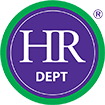 The nature of modern work means that most of us spend much of our time on a computer, sitting behind a desk. While this isn’t as dangerous as going down mines or into shipyards, it still comes with a number of health risks that as an employer, you must be sure to mitigate.
The nature of modern work means that most of us spend much of our time on a computer, sitting behind a desk. While this isn’t as dangerous as going down mines or into shipyards, it still comes with a number of health risks that as an employer, you must be sure to mitigate.
What is DSE?
One of the biggest considerations for office workers relates to display screen equipment (DSE). This includes PCs, laptops, tablets and smartphones. The incorrect use of DSE can lead to neck, back, shoulder, wrist, arm and hand pain, as well as tiredness and strains on the eyes.
One of the main factors which heightens the risks from DSE is that workers seem to be spending more and more time at their desks. Almost two thirds of office workers spend six hours or more sitting at their desk, according to research from recruitment consultants Office Angels. Almost half don’t leave the office all day.
When do DSE regulations apply?
You are required to protect workers from the health risks associated with DSE, and the law applies to any workers who use DSE for more than an hour at any one time. This includes those who work in the office, at home, mobile workers and those who hot-desk.
The first thing to do is to carry out a DSE workstation assessment. You may wish to do this yourself, but using a professional service such as that offered by The H&S Dept will ensure you get it right and save you time. You can help to reduce risks by encouraging workers to take regular short breaks from DSE work. And if an employee asks you for an eye test you are obliged to provide one.
What does a healthy DSE workspace look like?
You should set up your workstations so that employees’ forearms are approximately horizontal and their eyes should be the same height as the top of the screen. There should be enough space for documents and other equipment on the desk, and under the desk so workers can move their legs. Screens should be arranged so they avoid glare and bright reflections.
There should also be space in front of the keyboard for users to rest their hands, and the mouse should be within easy reach. Characters on the screen should be in clear focus.
When to carry out DSE further DSE assessments
You will need to carry out a DSE assessment when major changes are made to your office’s equipment, furniture or software.
Can cultural changes help to manage DSE risks?
There are other ways to mitigate the risks associated with DSE. One simple way is through cultural change. So you could make it clear to your team that they won’t gain any points for eating lunch at their desk or staying put for hours after home time. This will help workers avoid staying in the same position behind their desk hour after hour.
There has been an increase in the number of offices investing in standing desks in recent years too. And some models are adjustable, allowing workers to alternate between sitting and standing. So that could be an option.
And another trend which you could consider is for attractive break out spaces – for example cubby holes or sofas – where colleagues can retreat to for an informal meeting or to simply get away from their desks for a short while.
Interestingly, research has shown that employees in open-plan offices are more active and less stressed than those working behind cubicles or in private offices. The University of Arizona study, published in Occupational & Environmental Medicine, involved hundreds of workers over three days. It found that this could be because workers in open offices move to find quiet spaces to talk away from their desk.
Call The H&S Dept for help with DSE
DSE work doesn’t have to be high risk. Problems can be easily avoided if you follow good practice, set up your workstations properly and encourage your team to take breaks during prolonged use. And when you consider the flip side is that failure to do so can result in injury, illness, as well as poor productivity, it makes sense to get this right.
If you’re unsure or need support ensuring DSE safety in your workplace, get in touch with The H&S Dept for help.

